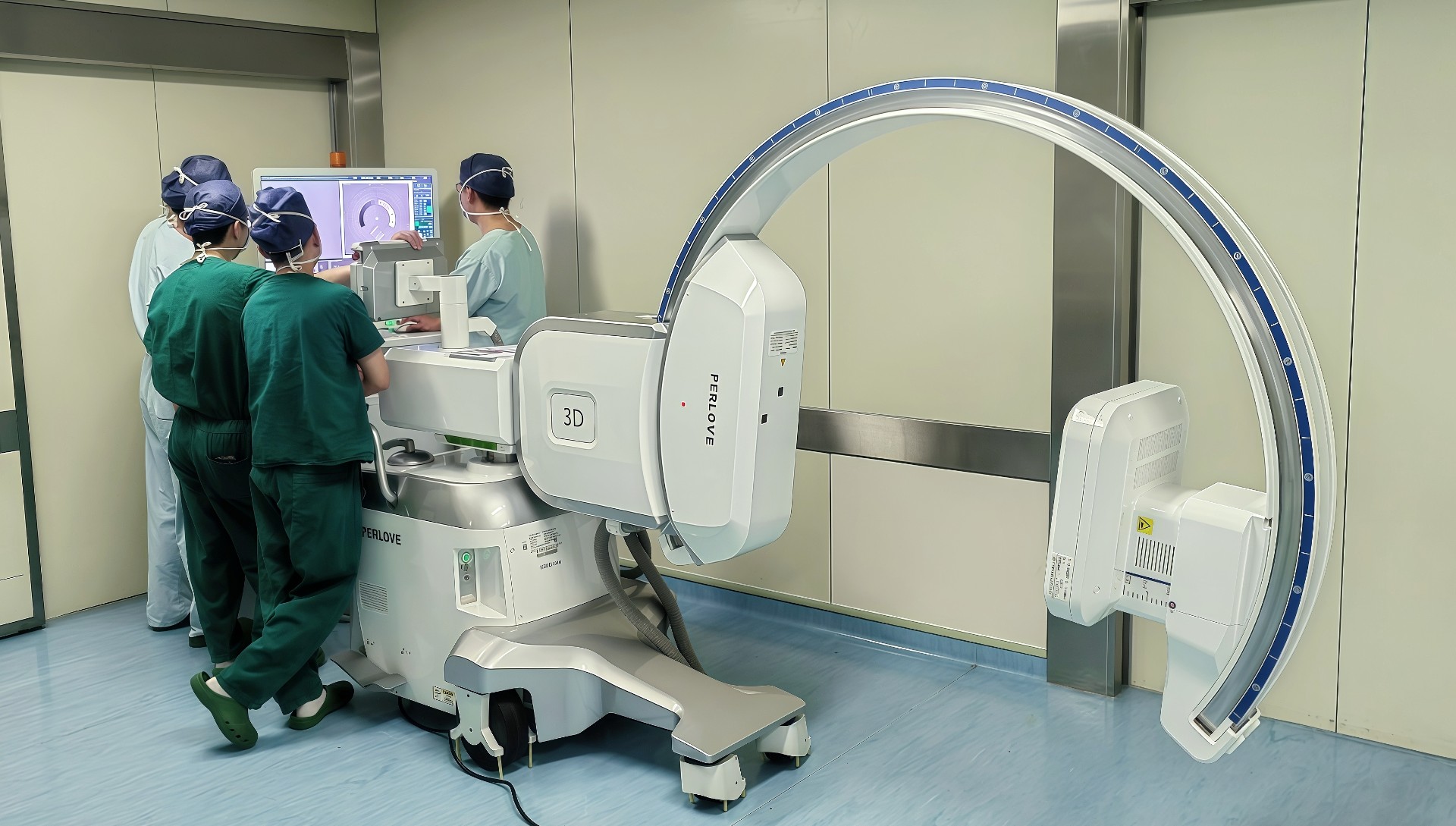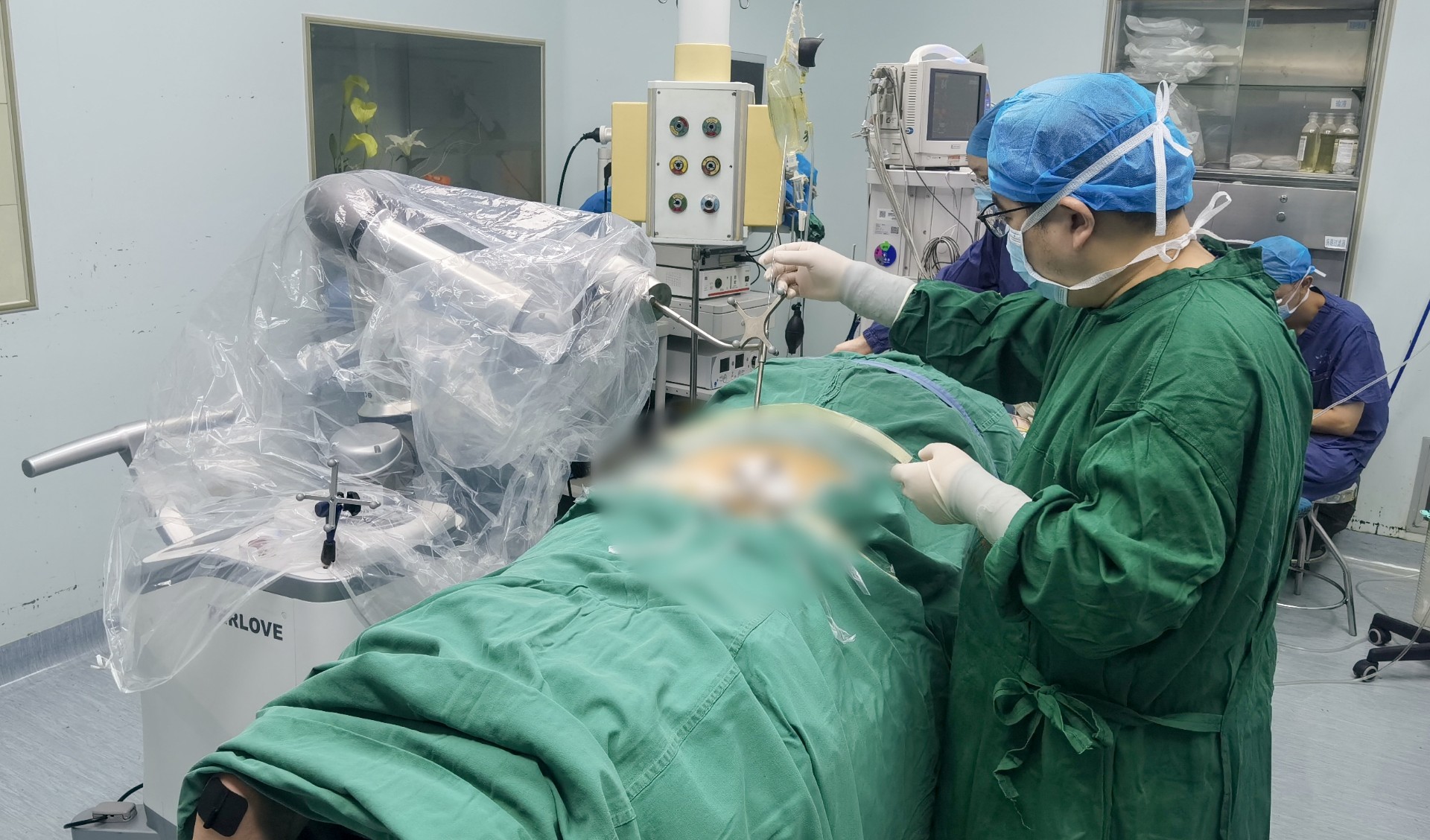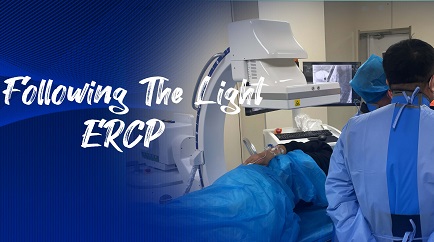News
2025-06-19 14:38:59 Views:1479
Multilevel Vertebral Compression Fractures With Vertebral Deformities: How Can Surgical Robots Break Through the Challenge?

In the field of medicine, every technological breakthrough drives a leap forward in precision diagnosis and treatment.
Perlove Medical’s orthopedic surgical robot, with its exceptional imaging and precise navigation capabilities, is helping patients in hospitals across the country begin new chapters in life.
01 | The Challenge of Complex Vertebral Compression Fractures
Patient Profile
Age/Gender: 60-year-old female
Preliminary Diagnoses:
1.Lumbar vertebral compression fracture
2.Postmenopausal osteoporosis
3.Severe osteoporosis
Clinical Presentation
The patient complained of severe lower back pain and restricted mobility. Physical examination revealed pronounced local tenderness and percussion pain in the lumbar region, especially over the affected vertebrae. Imaging studies showed:
1.Multi-level vertebral compression fractures
2.Significant reduction in vertebral height
3.Irregular vertebral morphology and deformity
4.Pedicle stenosis
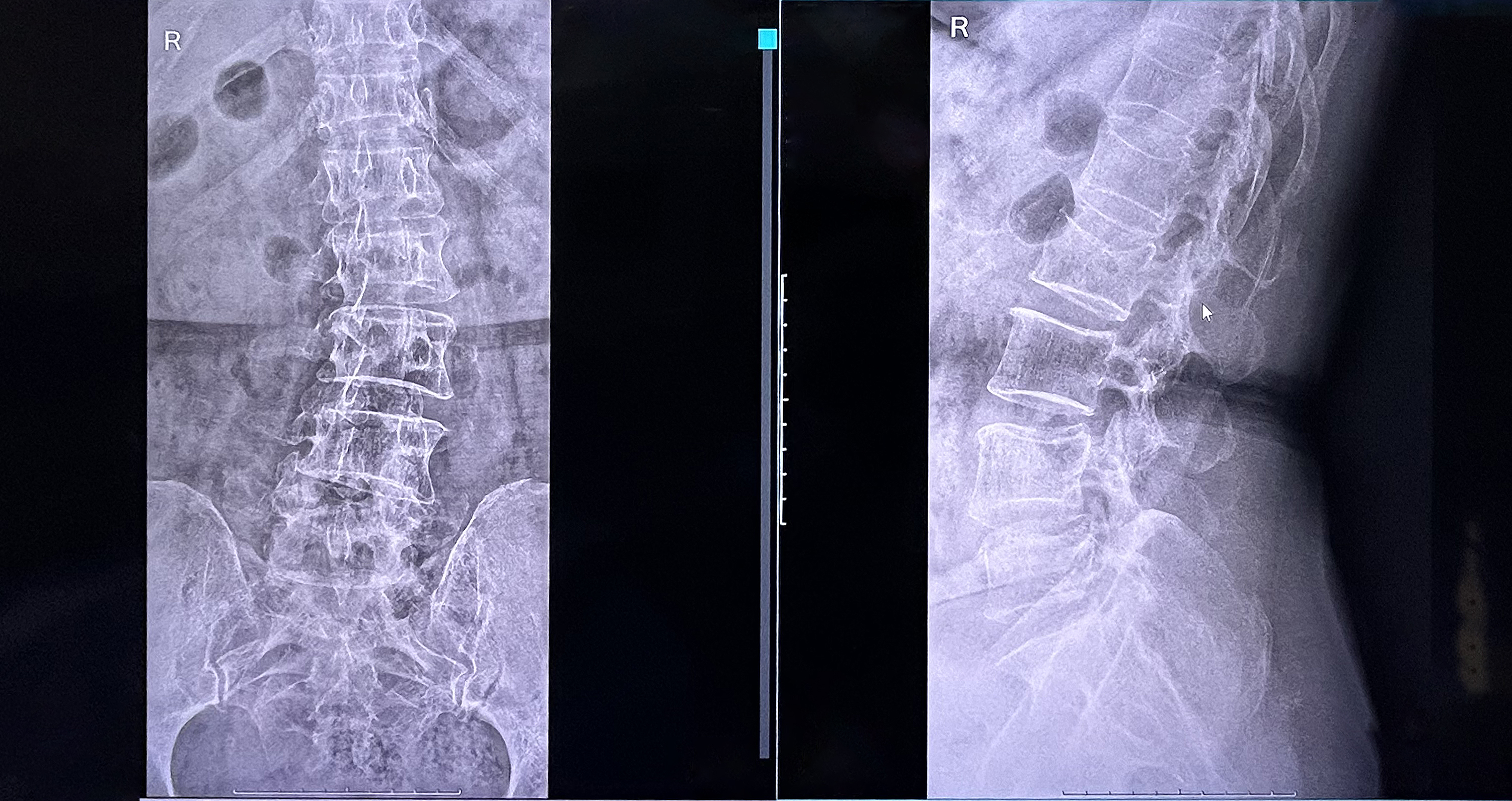
Preoperative images of the patient
Surgical Indications:Intolerable pain with poor response to conservative treatments (e.g., bed rest, analgesics); Multi-level vertebral compression fractures with compromised spinal stability
Surgical Procedure: Robot-assisted Percutaneous Vertebroplasty (PVP)
Anatomical structural abnormalities + severe osteoporosis
Exponential increase in puncture difficulty
Vertebral Deformity:the position and direction of the pedicle is altered, and the puncture angle is much different from that of a normal vertebra, making it extremely difficult to puncture the vertebrae with bare hands.
Pedicle Stenosis:The narrowing of the puncture channel means that there is very little surgical access left for the surgeon, and the slightest deviation may damage nerves and blood vessels.
Severe Osteoporosis:Severe osteoporosis will affect Image clarity, and it is difficult to accurately determine the position of the puncture needle on traditional images; osteoporosis and pedicle narrowing require the doctor to puncture as successfully as possible at one time; if the first puncture is not accurate, the arch has been damaged by the channel, and the puncture again may have insufficient space or insufficient holding force of the puncture needle, which may result in dislocation or slippage, and so on.
Extended Operative Time & Patient Tolerance Issues
Longer Surgery Duration: The patient has abnormal vertebral anatomy, requiring high precision in needle puncture and making the procedure complex. With fractures in two vertebrae and the need to treat cross-segmental compression fractures simultaneously, traditional surgery may lead to prolonged operative time, increasing the risk of anesthesia-related complications.
Poor Patient Tolerance: Due to compromised health, the patient may not tolerate prolonged surgery or repeated puncture attempts.
02 | Robot-Assisted PVP Surgery
With the support of Perlove Medical’s orthopedic surgical robot, the hospital successfully performed a highly challenging procedure. The entire operation was smooth and efficient, significantly shortening the surgical time, reducing the patient’s radiation exposure, and maximizing both the safety and effectiveness of the surgery.

During the operation, Perlove’s flat-panel 3D C-arm provided high-resolution, three-dimensional imaging. Based on these images, the surgeon accurately planned puncture paths for the two affected vertebral levels.
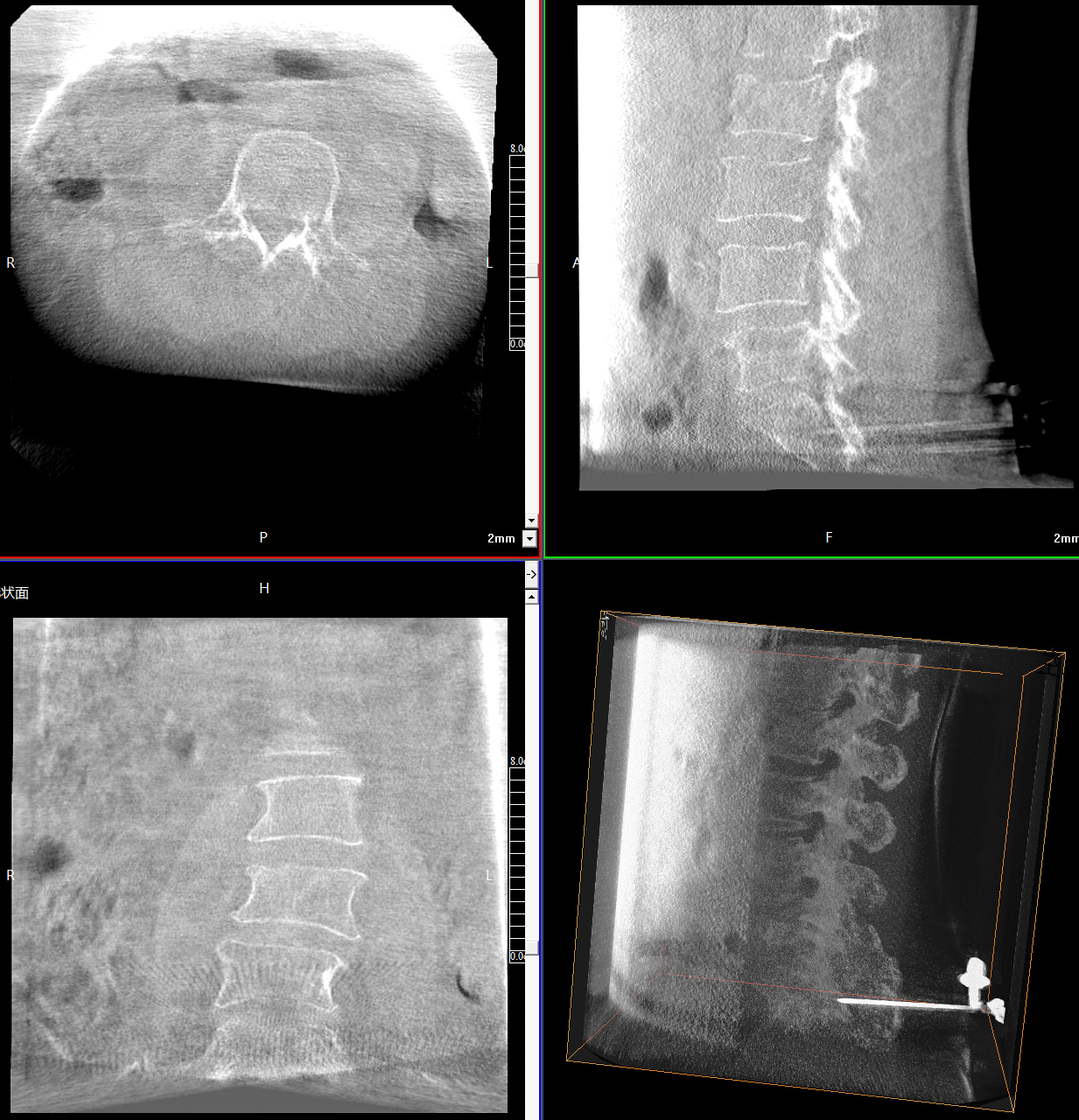
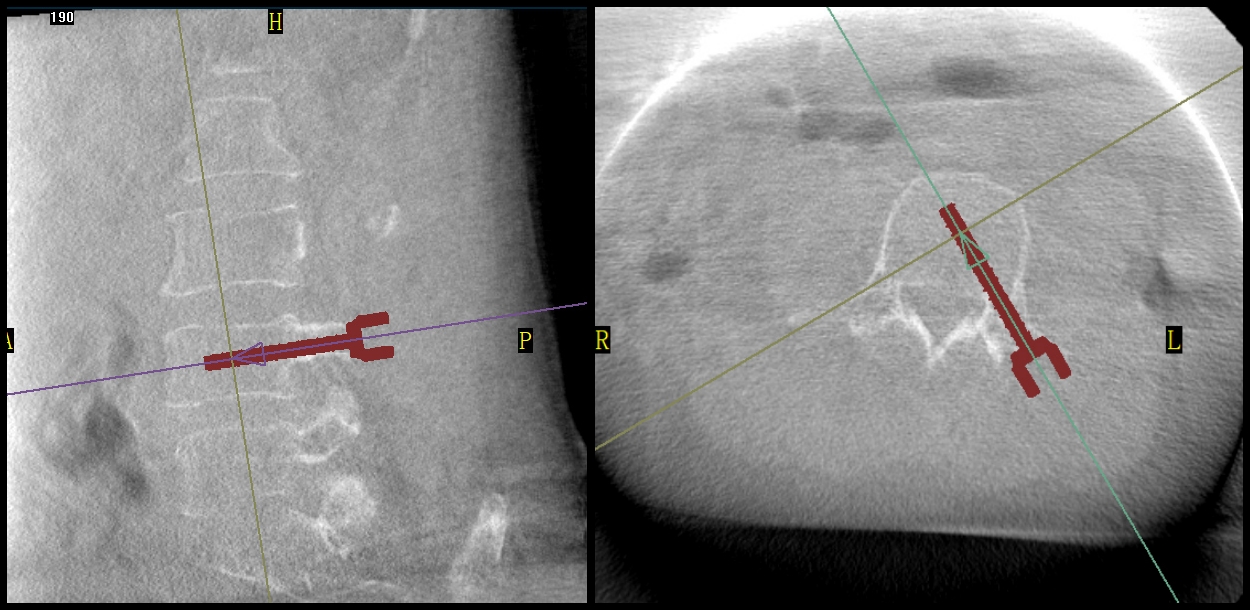
With its high-precision navigation capabilities, the robotic arm guided the surgeon to achieve accurate one-time puncture. Utilizing a steep medial inclination angle, a single channel successfully reached the center of the vertebral body, achieving a bone cement dispersion effect equivalent to that of dual channels. This enabled successful cement injection across two adjacent vertebral segments.

The bone cement demonstrated excellent dispersion within the vertebral bodies, with sufficient volume and no leakage. The overall surgical time was shortened, allowing the patient to receive high-quality treatment at the hospital.
In the field of orthopedics, percutaneous vertebroplasty (PVP) may appear to be a routine procedure, but it often conceals numerous challenges. Although the technique is well-established, anatomical differences among individuals make each surgery uniquely complex. Vertebral deformities, narrow pedicles, and varying bone quality mean that PVP presents differently in every patient. Perlove Medical’s orthopedic surgical robot helps streamline complex procedures and standardize routine ones, effectively overcoming the difficulties and risks of traditional surgery, and allowing more patients to benefit from the high-quality care enabled by advanced medical technology.
-
Perlove Medical’s High-End C-arm Installed at Shanghai Seventh People’s Hospital
Read More » -
Orthopedic surgical robot assists in sacral nerve stimulator implantation.
Read More » -
A Powerful Tool in Common Bile Duct Stone Removal Surgery — The Mobile Flat-Panel C-Arm For Intervention
Read More » -
Perlove Medical @CAOS 2025 | Intelligent Imaging for Precision
Read More » -
What Are the Clinical Advantages of the C-Arm Design in Medical X-Ray Systems?
Read More » -
Perlove Medical Shines at FIME 2025: Explore the Future of Global Healthcare Innovation
Read More »



